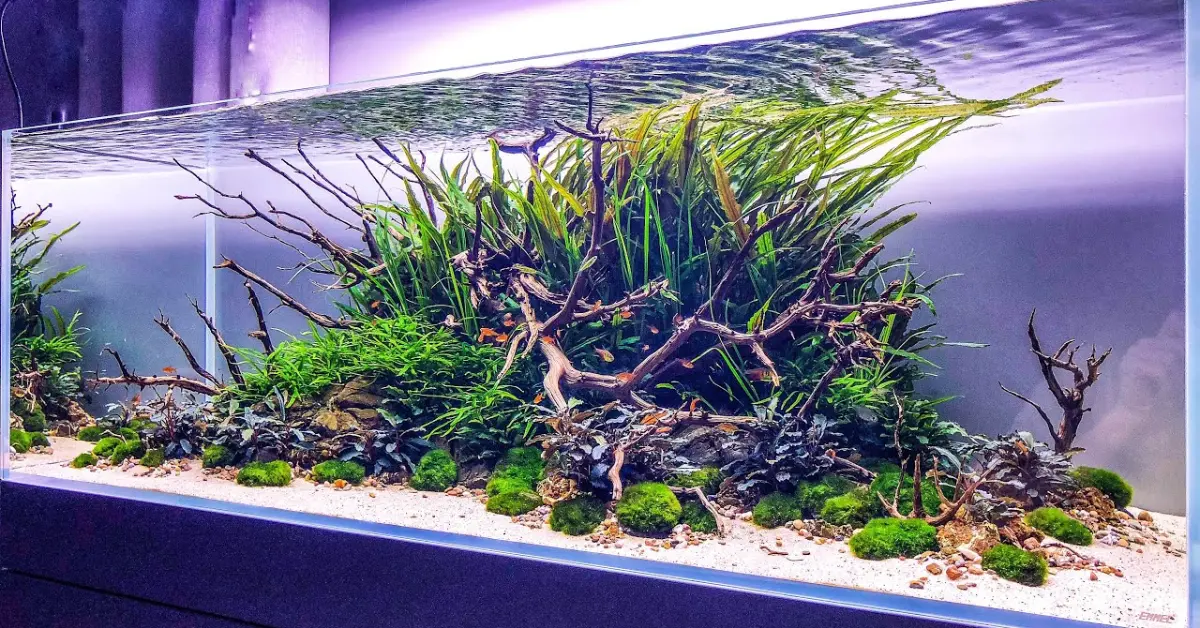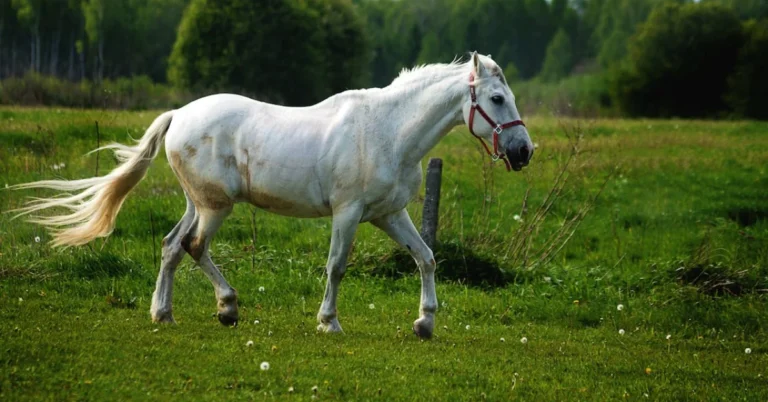For freshwater aquarists, lush vivid plant life adds intrigue and healthy function to home water features beyond schools of colorful fish. From dramatic backdrops of softly waving green fronds to carpets of mossy foliage hosting tiny sheltered communities, aquatic plants introduce new dimensions of aesthetic rewards and purification abilities.
Yet the novice aquascaper often worries about properly putting plants in place and keeping them alive thereafter. Fear of flooding floors while figuring out filtration systems leaves many enthusiasts focusing solely on fish. But a thriving planted tank creates its own bustling ecosystem requiring minimal support once established.
By understanding a few key techniques around substrate prep, plant selection, creative layouts and maintenance, cultivating spectacular aquatic gardens brims with satisfaction and surprisingly simple success. This guide unveils the fundamentals from substrate to tweezer tricks that transforms plain tanks into jaw-dropping underwater paradises.
First Glimpse Below the Surface: Why Include Aquatic Plants At All?
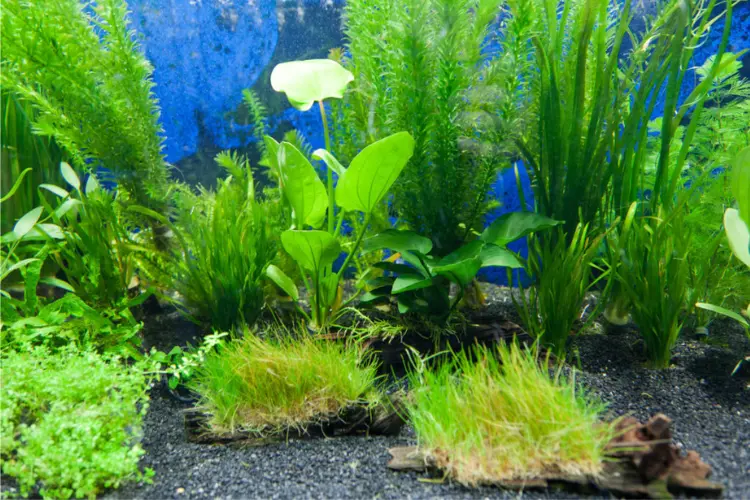
Before wading through technical specifics on purchasing and placement, let’s highlight motivations to consider adding aquatic vegetation in the first place. For starters, live plants oxygenate water as they photosynthesize using light. This regulates life-giving air levels for labyrinth breathers like bettas along with fish taking in dissolved oxygen through gills. Lush leaves also provide shaded hiding spots for shy species and surfaces for egg scattering during breeding.
Additionally, various aquatic plant types filter nitrogen compounds like ammonia and nitrates that accumulate from fish waste, food debris and general entropy. Some specimens even directly ingest free-floating algae bits helping keep tank sightlines clear. This biofiltration capacity reduces the workload on mechanical filtration components to keep water pristine.
From an aesthetic stance, best aquarium plants simply look stunning while recalling serene natural scenes. Their presence adds depth, contrast and movement against glass walls and gravel horizontals. Textural variations from ruffled swords to delicate hairgrass create captivating interest. Even limited to silk or plastic facsimiles, vegetative accents enhance ambience considerably. Real specimens multiply the tranquil biotope immersion!
Finally, witnessing the lifecycle of flowering aqua-flora blooming repeatedly offers immense satisfaction. Tending these aquatic denizens through regular maintenance and pruning yields a small crop of new baby plants as propagation rewards. Everything blooming, floating, waving and greening under your care symbolizes the mini biosphere thriving thanks to your efforts. A planted tank becomes a living art installation!
Preparing the Aquatic Garden Canvas: Substrate Selection & Installation

The foundation underlying any successfully planted aquarium starts with an appropriate substrate to root into. This base layer also stores vital minerals exchanged during aquatic plant nutrient uptake cycles. While fish-only tanks often house merely plain gravel with underlying filter media trays, thriving plant growth requires more planning and depth.
Specialized products like ADA AquaSoil, Fluval Stratum or EcoComplete Planted Aquarium Substrate offer mineral-rich alternatives with excellent drainage capacity perfect for aquatic root networks. However, these commercial substrates generally prove more costly than basic gravel. Another approach involves blending various sediment components to optimize benefits.
A cost-effective option starts with standard aquarium gravel, then layers mineralized top soil or commercial potting mix capped again by an additional gravel barrier separating organics from the water column. This allows plants to stretch expanding roots into nutrients below while filtering water through clean gravel avoiding murky tannins leaching upward.
About 2-3 inches of total substrate depth suits most aquarium species outside advanced hobbyist customization. Contour bottom elevations if desired before adding water during tank setup. Use a dish or decoration base to hold layered substrate in raised sections for dimensional intrigue. Consider liquid fertilizers later if deploying leaner gravel-only layers to nourish root feeders.
When preparing substrates, rinse components first in buckets to remove factory dust and avoid in-tank plumes impossible to capture later. Soak potting soils before submerging to saturate and reduce floating bits. Carefully pour substrates by handfuls rather than dumping entire bags to better control placement. Level and shape contours with tools before flooding to prevent undoing work.
Choosing the Players: Aquatic Plant Types & Needs
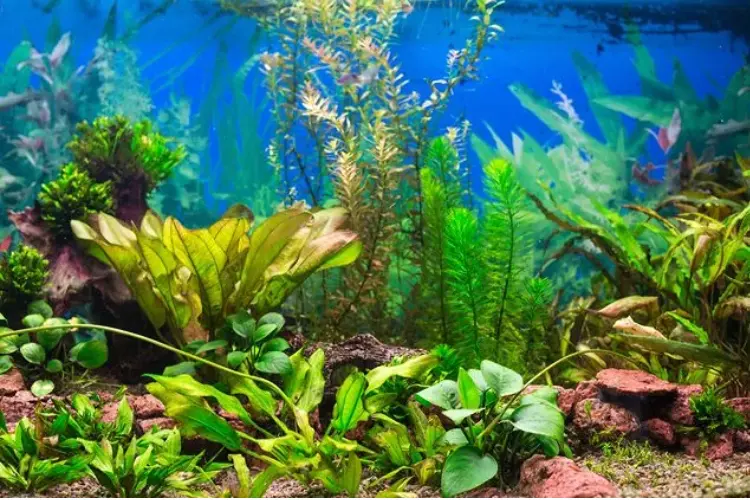
Myriad freshwater plant choices exist beyond generic plastic decor. Entire botanical specialty farms and competitions revolve around cultivating new aqua-flora variants! This diversity means choosing plant occupants wisely based on individual care needs and tank conditions.
Low light levels suit low-tech setups or tanks lacking plant-dedicated LED lighting. Hardy low-light options include Anubias barteri with broad waxy leaves clinging to hardscape elements via rhizomes rather than rooting underground. Similarly, Java ferns thrive when attached to decor instead of substrates. Floaters like Frogbit or Salvinia minima ride water currents across the surface while dropping trailing roots as tasty fish hideaways.
Medium and high lighting conditions enable more choices like red-hued Alternanthera reineckii “cardinalis” or lush wrinkled Amazon swordplants ready to fill space. Photosynthesis supporting stems like hygrophila and creeping leafy stems such as staurogyne repens create bushy columns and verdant carpet foregrounds. More lighting generally infers increased fertilization and carbon dioxide supplementation requirements too for peak development though.
During plant selection, ensure prospective greenery matches existing tank conditions like pH and hardness while fulfilling natural fish behaviors with shelter options. Know thy aquarium when stocking to prevent wasting funds and killing gifts. Store plant purchases in original cup water then acclimate new arrivals slowly before planting to avoid shock. Now the fun truly starts!
Play With Your Plants: Creative Aquatic Garden Design Concepts
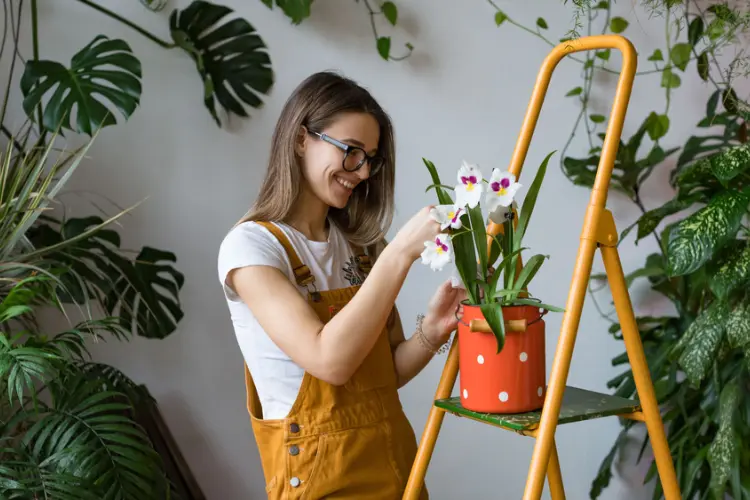
Before tweezing several tons of plants in place, consider overall design goals. Do you envision a tranquil forest with small bright clearing for schooling fish? A meadow packed with lush ground cover surrounded by towering sword stalks? Dutch geometric rows or sweeping textural miniature landscapes are equally possible!
Group like plants in odd numbered clusters for natural appeal. Use larger specimens like Amazon swords to define areas by size then mass smaller stems or carpets around them. Angle and position plants rather than rigid rows. Intersperse colors for contrast. Envision where you want open swimming zones versus heavily planted refuges to guide positioning.
Moss setups create alien-looking sanctuaries. Floating rafts of pond plants center water’s-eye focus while allowing light penetration. Select a large focal point plant like resplendent red Tiger Lotus with supporting greenery winding around hardscapes. Conduct regular pruning maintenance later to control inevitable growth spurts.
Getting Your Hands Wet: Planting Methodology
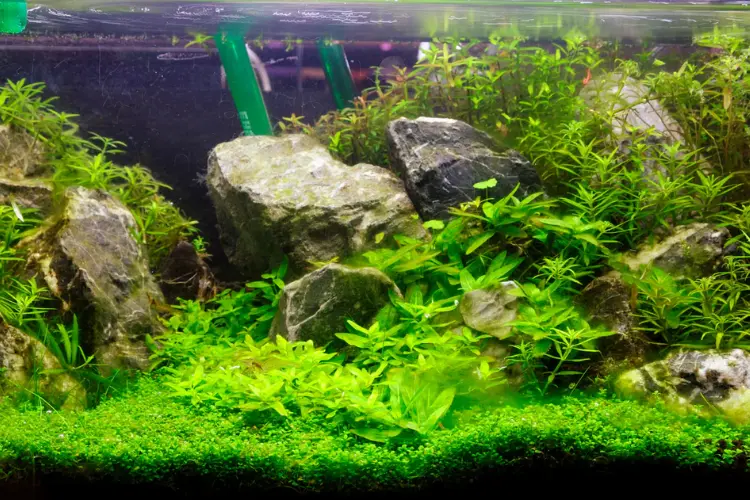
With envisioned layout sorted and plants prepped, the fun truly starts! Ensure clean hands or tools like stainless steel tweezers to avoid damaging delicate root tendrils and leaf membranes during installation. Always gently rinse plants beforehand removing nursery gel or debris without abrasively scrubbing.
Mind the roots! Many aquarium plants ship with rock wool securing stems in plugs. Gently tease apart the threads to reveal white nubbins soon to anchor among gravel grains. Ensure the crown where stems meet roots rests just above substrate rather than buried. Lightly push groups of stemmed plants into position already grouped rather than individual stalks for fuller effect.
Compact carpeting plants may arrive potted in aqua-soil pods. Gently squeeze and massage root balls loose before planting by sectioning mats and pressing into place without completely burying. Flat plant weights temporarily prevent uprooting until established. Over time, proliferating runners spread infilling bare spots between portions.
Rhizome plants like Anubias simply tuck into crevices of driftwood, stone or commercial plant mounting putty holds in place without even requiring substrate. Just ensure the horizontal rhizome connections avoid burying as new roots sprout downward wherever makes contact. These hardy broadleafs thrive even fully submerged or floated if aesthetic preferences change!
Once planted, allow fresh roots to establish equilibrium for a few days before fully flooding a tank if adding fish simultaneously. Go slowly adding livestock after planting anyway. Observe growth over subsequent weeks and relocate struggling specimens still finding their footing into better spots a bit delayed. Everything will fill out given patience and care.
Cultivation After Planting: Keeping Your Aquarium Garden Thriving
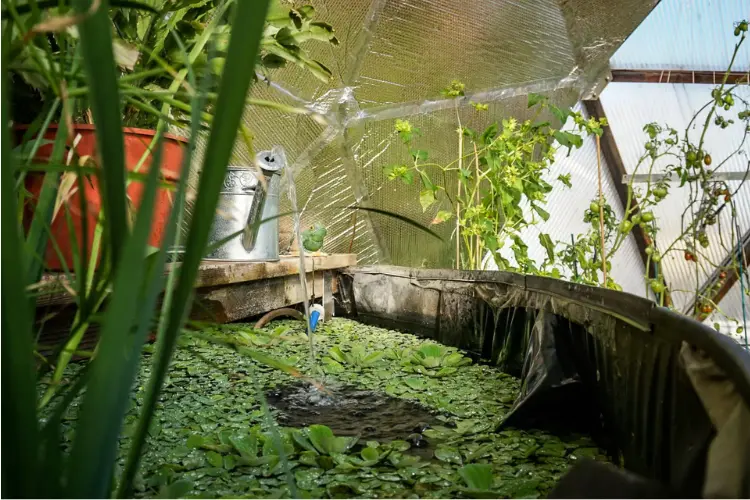
An established live planted tank depends on some maintenance to continually thrive just like any garden but with much less effort! Expect some die-off losing aged lower leaves while plants acclimate initially. Clear yellowing foliage to curb algae enticement but allow plants time adjusting to new liquid homes before replacing anything not rebounding after a month.
Provide proper fertilization to fuel plant processes since sealed tank conditions lack natural soils replenishing minerals. Use comprehensive liquid formulas or customized regimes with individual component additives. Overdosing risks algae blooms so follow instructions and observe effects adjusting as needed.
Final Thoughts
Likewise ensure lighting elements supply essential illumination intensity and brightness plants require without overdriving demands. Photosynthesis fuels growth yet excess causes problems for fish. Dial in adjustable fixtures to align with planted species needs.
Perform 10-25% weekly water changes religiously! This sweeps away invisible chemical accumulations and replaces depleted elements from depletion. Scrape algae or trim yellowed leaves. Target feed fish avoiding waste accumulation. Clean filtration components monthly to operate efficiently.

